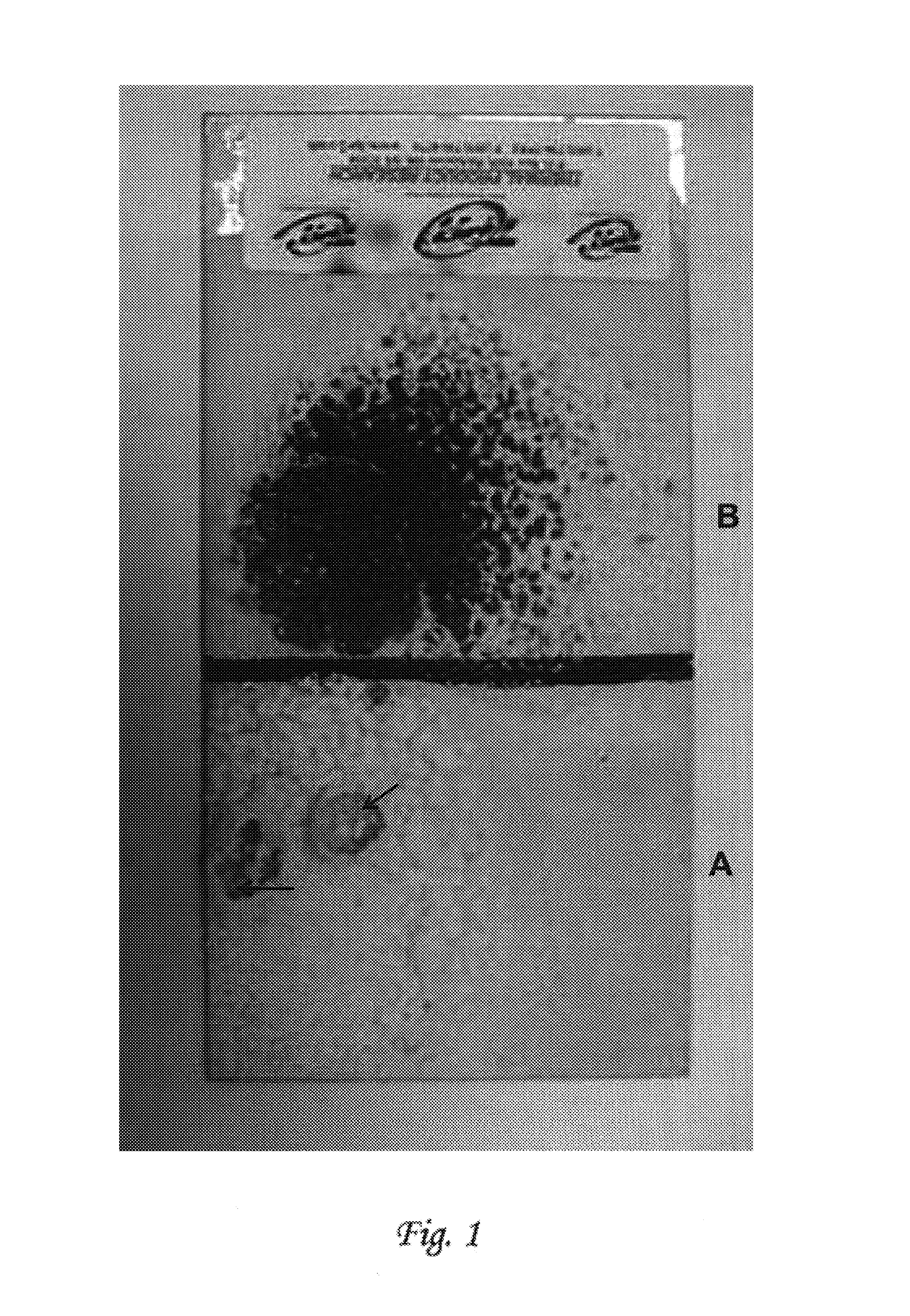Protective coating
a protective coating and coating technology, applied in the field of coatings, to achieve the effect of limiting the overexpansion of the underlying intumescent layer
- Summary
- Abstract
- Description
- Claims
- Application Information
AI Technical Summary
Benefits of technology
Problems solved by technology
Method used
Image
Examples
example 1
[0094]A coating composition according to the invention is provided as an aqueous dispersion having the formulation of Table 1.
[0095]
TABLE 1Componentparts by weightSodium Silicate241(N ®, PQ Corp.)Alumina Trihydrate105(Micral ® 932, J. M. Huber)Kaolin25(TEK-2001, J. M. Huber)Surfactant10(Triton ® CA, Dow)Water5
[0096]The aqueous coating composition of Table 1 has the form of a substantially homogenous dispersion in water. The viscosity of the formulation can be adjusted as desired by the addition of water. The N® sodium silicate (PQ Corp.) used in the aqueous formulation contains about 62.5% water and has a sodium silicate content of about 37.5% by weight. The 241 parts by weight sodium silicate listed in Table 1 refers to the total weight of N® sodium silicate (PQ Corp.) solution. If a viscous formulation is desired, the 5 parts additional water may be decreased or omitted.
[0097]The coating composition can be packaged in cans and the like and applied to a substrate by, for example, b...
example 2
[0098]Two coating composition according to the invention are provided as aqueous dispersions having the formulations shown in Table 2.
[0099]
TABLE 2Formula AFormula BComponentparts by weightparts by weightSodium Silicate241210(N ®, PQ Corp.)Alumina Trihydrate10521(Micral ® 932, J. M. Huber)Kaolin2580(Grade 601, J. M. Huber)Water510
[0100]The aqueous coating compositions of Table 2 have the form of a substantially homogenous dispersions in water. The viscosity of the formulations can be adjusted as desired by the addition of water. If a viscous formulation is desired, the 5 parts additional water may be decreased or omitted. The N® sodium silicate (PQ Corp.) used in the aqueous formulations contains about 62.5% water and has a sodium silicate content of about 37.5% by weight. The parts by weight sodium silicate listed in Table 2 refers to the total weight of N® sodium silicate (PQ Corp.) solution.
[0101]The dried coating of Formula A will comprise about 41% sodium silicate (solids), 48%...
example 3
[0102]Two coating compositions according to the invention are provided as aqueous dispersions having the formulation of Table 3.
[0103]
TABLE 3Formula AFormula BComponentparts by weightparts by weightSodium Silicate210600(N ®, PQ Corp.)Alumina Trihydrate5.8 12(Micral ® 932, J. M. Huber)Kaolin55.65192(TEK-2001, J. M. Huber)Polymeric binder46.2165(UCAR ™ Latex 9042, Dow)Plasticizer6.1—(Santicizer ® 141)Surfactant.53 2(Triton ® CA, Dow)Water10—
[0104]The aqueous coating compositions of Table 3 has the form of substantially homogenous dispersions in water. The viscosity of the formulations can be adjusted as desired by the addition of water. If a viscous formulation is desired, the 10 parts additional water may be decreased or omitted. The N® sodium silicate (PQ Corp.) used in the aqueous formulation contains about 62.5% water and has a sodium silicate content of about 37.5% and the UCAR™ Latex 9042 contains about 45% water and about 55% solid by weight. The parts by weight sodium silicate...
PUM
| Property | Measurement | Unit |
|---|---|---|
| median particle diameter | aaaaa | aaaaa |
| melting point | aaaaa | aaaaa |
| viscosity | aaaaa | aaaaa |
Abstract
Description
Claims
Application Information
 Login to View More
Login to View More - R&D
- Intellectual Property
- Life Sciences
- Materials
- Tech Scout
- Unparalleled Data Quality
- Higher Quality Content
- 60% Fewer Hallucinations
Browse by: Latest US Patents, China's latest patents, Technical Efficacy Thesaurus, Application Domain, Technology Topic, Popular Technical Reports.
© 2025 PatSnap. All rights reserved.Legal|Privacy policy|Modern Slavery Act Transparency Statement|Sitemap|About US| Contact US: help@patsnap.com

